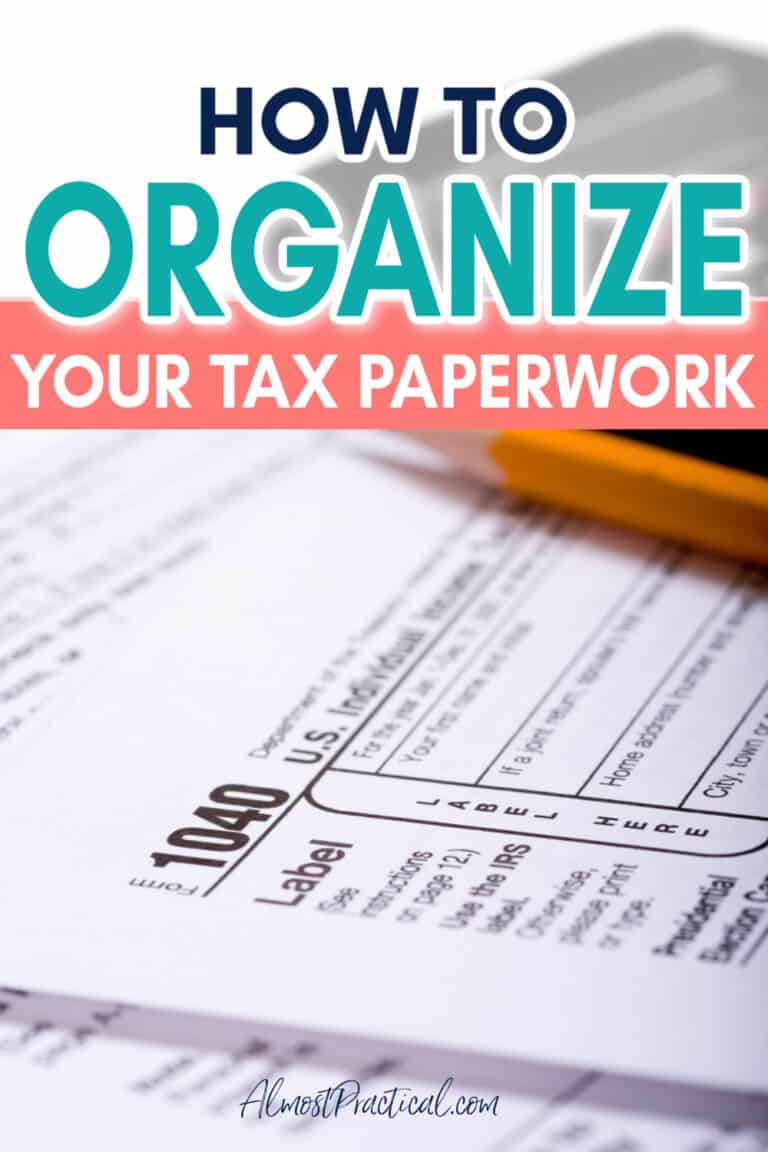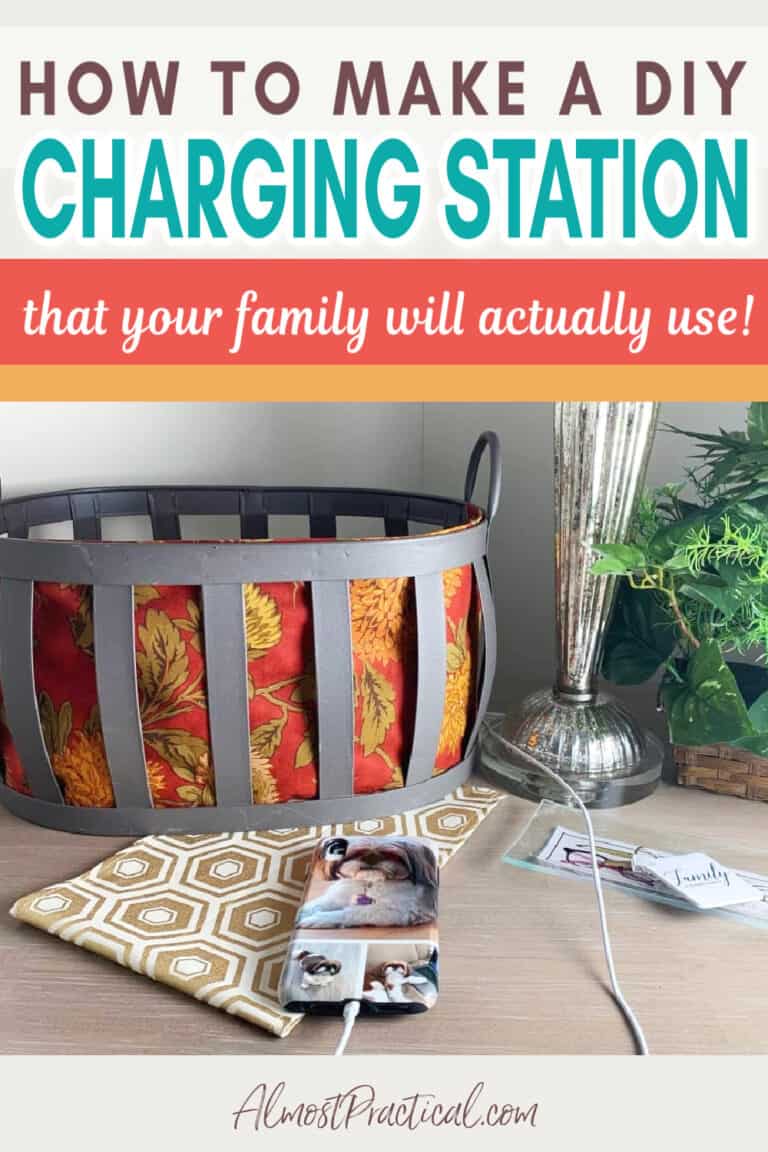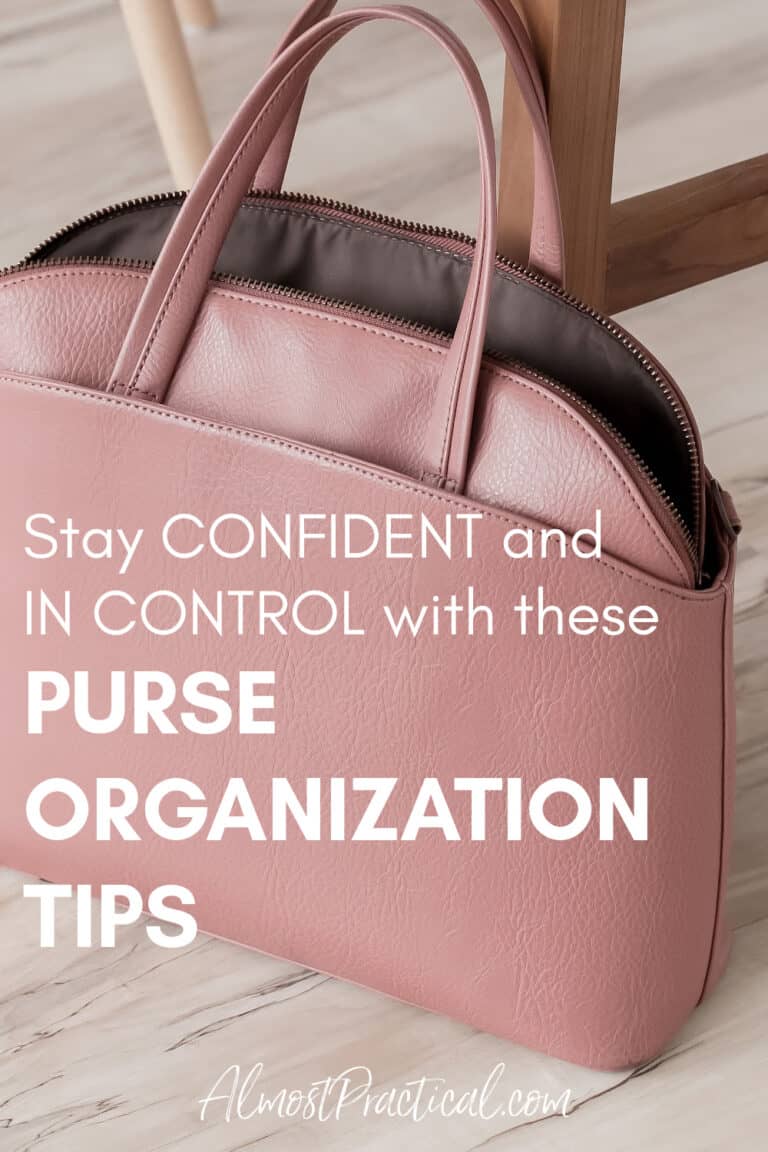Paperwork Organization Guide – How to keep your papers organized at home.
This post may contain affiliate links which means I make a commission if you shop through my links.
Disclosure Policy
Despite having computers, cloud storage drowning, email statements, and so much other technology, the fact remains that we are drowning in paperwork.
It clutters up our desks, our homes, and ultimately our minds.
We feel so overwhelmed by the stacks of work that surround us, that it is hard to dig out from under.
Getting through it all may seem like a monumental task, but with the right systems in place, it is possible.
This article will give you some ideas that you can use to bring order to your home office and get your paperwork under control.

How Do You Organize Your Paperwork?
The first thing you should do is evaluate your current situation.
Where do you keep your paperwork?
Be honest.
Do you have a file cabinet or is your dining table the new home office?
Whatever system you currently use – take note of what is working and what isn’t.
If your paperwork doesn’t make it into the filing cabinet then ask yourself why.
The next thing you need to do is decide on where you want to store your papers going forward.
Pick a place and make this the go to location for your files.
From now on, your goal is to get your papers to wind up in this spot.
Personally, I like to use a file cabinet to store my files and paperwork.
This keeps everything like my important documents and bills all in one place.
This article will help you choose the best file cabinet for your home office.
And if you are looking for a certain aesthetic – take a look at these choices in fun and fancy file cabinets.
Who said that filing cabinets have to be boring?
5 Basic Filing Systems
Once you have the destination for your paperwork all set, you need to come up with a system on how to store your files within your storage unit.
There are five basic filing systems that you can use:
- Alphabetical
- Chronological
- Organized by Topic or Category
- Geographical or
- Numerical
You can pick one or use a combination of a few.
Typically, when we are talking about organizing paperwork at home, most people will go with a filing system based on Category or Alphabetical.
I find that combining Category and Alphabetical works well.
Each drawer in your file cabinet can house a specific, broad category of paperwork.
Then each file in the drawer can be arranged alphabetically by sub-category.
Here is a list of 70 file cabinet organization categories that you can use to help you organize your paperwork.
Use these ideas to create a home filing system that will work for you.
7 Steps to Organize a Home Filing System
Now that you have your paperwork filing system in place, it’s time to start using it.
1. Use an Inbox or Collection Basket
Use a collection basket or inbox to corral all snail mail, printouts, things you think you might need, and random papers that float across your desk or through your house.
2. Set Aside Time to Process Your Papers
Getting through your pile of papers will take some time – especially if you have ignored it for awhile.
So, set aside some time DAILY to start going through it.
Once you empty that inbox, continue to work on it daily so it doesn’t pile up again.
The good news is that it won’t take you as long to process your papers if you stay on top of it.
3. Make Decisions
You need to make a decision for each paper that you touch.
When you pick up a piece of paper, decide whether to:
- take action on it (pay it, delegate it, call or contact someone about it, etc.)
- file it,
- scan it, or
- trash, recycle, or shred
4. If It Doesn’t Take Long – Do It
Procrastinating on your action items is self sabotage.
Don’t procrastinate!
Avoid shuffling papers from one pile to the next by taking action and filing, scanning, or trashing the paper.
5. Create Piles for Things You Can’t Do Immediately
Separate the things you can’t do immediately into 3 piles
- to do
- to file
- to scan
Sort the papers from your inbox into these 3 categories.
6. Schedule Time to Work on Each Area
This time is different from the time you set aside for processing your paperwork.
Processing your paperwork won’t take you that long on an ongoing basis but taking action on the stuff in the papers may take you longer.
Make sure you give yourself time to get the work done so you can put the paper away for good.
7. Shred Any Sensitive Information
Invest in a good paper shredder and keep it near your work area or file cabinet.
If any of the papers that you plan to trash contain sensitive information, shred them instead.
Here is a list of the best paper shredders for your home office.
It is also a good idea to keep both a trash can and a recycle bin (or trash can for recyclables only) next to your desk.
This way, you won’t clutter your area with papers that you need to take out to the recycling bin in the garage or other location.
Best Way to File Documents
If you are using a filing cabinet to store your paperwork, you will want to use a combination of hanging file folders and manilla folders to store your papers.
I find that the standard green hanging folders at Staples offer the best value, though they are kind of boring to look at.
If you want to splurge a little, they do have some hanging files in new jewel tone colors that are quite nice.
I use a green hanging folder for each subcategory and then place manilla folders inside the green folders for each common collection of papers.
The 3 tab manilla folders at Staples are nice quality and give a good bang for the buck.
But if you want something fancier you can check out these affordable cute file folders here.
How Do I Declutter My Paperwork
The best way to declutter your paperwork is to be consistent with your efforts and be decisive about what to do with the paper.
If you have let it pile up for awhile, then quickly sort through it to see if there is anything that is time sensitive – like an overdue bill or something that you need to RSVP to.
Once you pulled out any emergencies, tackle the rest of the pile methodically as we outlined above.
How Do You Organize Random Papers?
Organizing random papers is tricky.
These can be scraps of notes or papers that you just don’t know what to do with.
Try putting these in your To Do or Action pile so you can move on to quickly processing all the rest of the papers in your pile.
Then, during the time that you scheduled to work through your action pile you will have the time to clearly make decisions on these random papers.
You will need to ask yourself why you might want to keep this information and then designate a place to store this kind of stuff.
You may consider scanning the paper and filing it in an app like Evernote, Notion, or Google Drive.
Best Way to File Computer Files
While paper clutter is obvious and stressful, digital clutter is also very real.
It’s easy to fill our hard drives and cloud drives with useless information that we no longer need.
Here are some tips you can use to clean up your computer files:
- How to take charge of your digital clutter.
- How to name your computer files so you can find what you need.
- How to clean off your computer desktop in 5 minutes or less.
How Does Marie Kondo Organize Paperwork?
If you are a fan of the KonMari method – then you might be interested in how Marie Kondo recommends you organize your paperwork.
Marie Kondo wrote the book The Life Changing Magic of Tidying Up and in it she advises that you divide papers into 3 categories:
- Papers currently in use
- Papers needed for a limited time and
- Papers needed indefinitely
Beyond that she says discard everything else.
Where to Store Important Papers
While your file cabinet is great for storing most of your paperwork, some items may need more secure storage.
This would include things like birth certificates, vehicle titles, social security cards, diplomas, etc.
You will need to find your comfort level with how you store these.
A few options include:
- a safe deposit box at your bank,
- a fireproof box, or
- a fireproof bag that could fit in your file cabinet.
Paperwork Organization is a Work In Progress
As long as paper continues to come through door, paperwork organization is always going to be a work in progress.
If you have a good filing system in place and a solid routine for scheduling time to work on it – then you should be able to keep the clutter at a minimum.
Happy organizing!








Great article. I really liked the links to the different file cabinets. For some people making the supplies pretty helps to motivate them to use the system. I’m giving a seminar on setting up a filing system soon, so I’ve been thinking similar thoughts.
Hi Janet,
Paperwork doesn’t seem like so much of a chore if the place where you work is an appealing space (maybe even Pinterest worthy 😉 ) Your seminar sounds quite interesting, lots of ideas to cover.
I’ve been organizing client papers for 20 years, and I can’t believe I’ve never seen fireproof *bags* before. This definitely goes on my list. Great tip!
It’s always excellent to rub elbows with someone else who obviously loves paper management.
Hi Julie,
I was pretty excited to find fireproof bags – they take up less space than the boxes, although the boxes definitely seem more heavy duty. Paper is a necessary evil and always a work in process but it’s so much easier with a system. 🙂
Great tips! I recommend to all my clients that their important documents must be in a fireproof and waterproof box. It will truly help you when you need it most!
Hi Sabrina,
Yes – the fireproof box is a must and if you use one, then usually you know exactly what is in it, which is a good point!
I can tell from your process that you love organizing papers. You give such solid advice on the how-tos. One of the things I’ve discovered with clients that don’t like to file is that if they are visually oriented, investing in the beautifully-colored hanging folders with matching interior file folders makes it a lot more fun for them…and easier to maintain.
Hi Linda,
Haha! I don’t think anyone truly loves organizing papers – but it is a necessary evil. I love using pretty folders and pops of color, it’s just a shame that the fancy ones cost so much more than the drab office issue. Sometimes stickers or colored labels can be a good compromise.
Thanks for stopping in!
This is very thorough and helpful! I think you cover all the main points. I’ve come to realize that some people really like having their “active” files out. There have been some interesting discussions about this on POINT. That isn’t my personal preference, but I’m learning to lean in to alternative approaches. As long as you can reliably find what you need, that is what matters most!
Hi Seana –
Agreed – as long as you can find what you need – that is the most important thing.